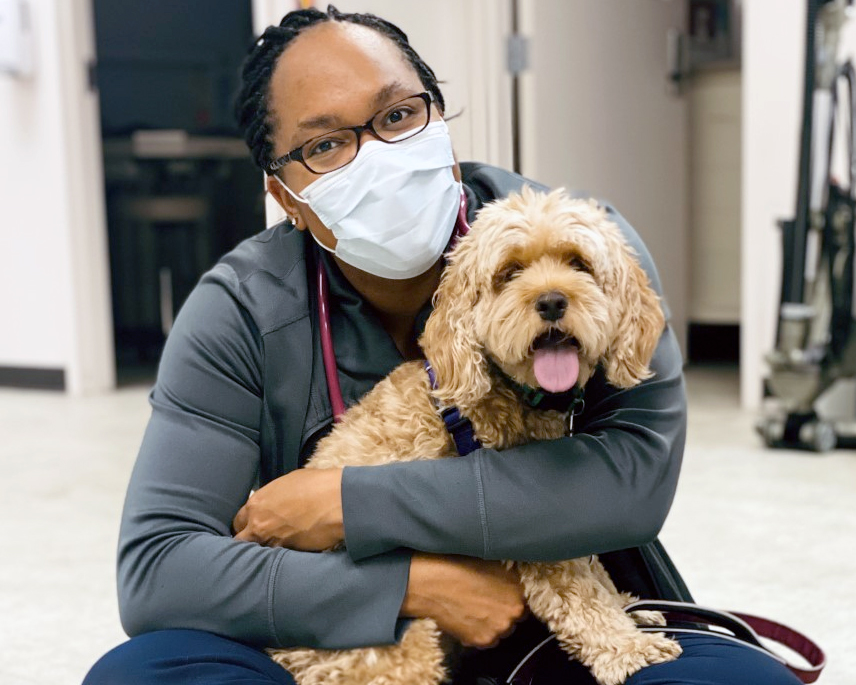Dental Care Shows Your Love

February is National Pet Dental Health Month, an annual reminder of how important dental health is in our pets. I personally love dentistry, so this month is a mini celebration for me! Dental disease is very common in dogs and cats. In fact, it is one of the most common conditions we treat in our patients. Fortunately, there is a lot that can be done to help maintain the dental health of your pets.
Around 85% of pets have periodontal disease, which is disease around the outside of the tooth. The way to prevent periodontal disease in pets is the same approach used for people: home dental care and professional cleanings. The goals of home dental care are to remove plaque from teeth and bacteria from the mouth. Without regular home dental care, the plaque on the teeth will mineralize. Eventually plaque becomes tartar, which is the hardened, solid material on the teeth. If your pet has tartar on her teeth, it will tend to have a brown/black color. The heaviest amount is seen on the back teeth.
As the tartar (also known as calculus) accumulates in the space around the tooth, inflammation and infection can develop. Ultimately there will be damage to the attachment of the tooth. By this stage, you will see redness and swelling of the gums around the teeth. You may even notice a tooth is loose. Once this occurs, a professional dental cleaning is necessary to address these teeth. Without a cleaning, the periodontal disease will continue to worsen.
The bacteria in the mouth can also affect other parts of the body, and may even lead to infection in the heart, liver, and kidneys. That is why it is vital to address any periodontal disease your pet has: this is not only a dental issue.
I hope by now I have convinced you that the dental health of your pet is an essential aspect of their health, and that you’re super excited to start your pet’s home dental routine! There are various home dental care options and below are examples you can try with your pet:
- Brushing the teeth
- Dental wipes, rinses, and pads
- Dental diets and treats
I recommend using products that are approved by The Veterinary Oral Health Council. Please visit the following website for a list of products that they have approved. Contact us if you have any questions about these home dental care options and products.
Practicing regular home dental care also helps you identify dental problems such as fractured teeth or masses in the mouth. It is a good idea to make a practice of opening your pet’s mouth and looking inside from the time your pet is young, so it becomes a comfortable process for you both.
Now onto part two, which is the professional cleaning. The type of cleaning we perform for your pet is very similar to what is done when you go to the dentist for your regular checkups, except general anesthesia is necessary with dog and cats for us to fully examine the teeth and gums and determine what treatments are necessary. Even with routine home dental care, a cleaning will eventually be needed, but the hope is that cleanings will be needed less often. A veterinarian can determine whether a dental is necessary during a regular health examination of your pet.
I recommend visiting the following website, which has a handout that discusses what the procedure involves in more detail. Please contact us if you have any further questions about the dental procedure or if you are interested in having a dental performed for your pet.
Amber Slaughter, DVM
